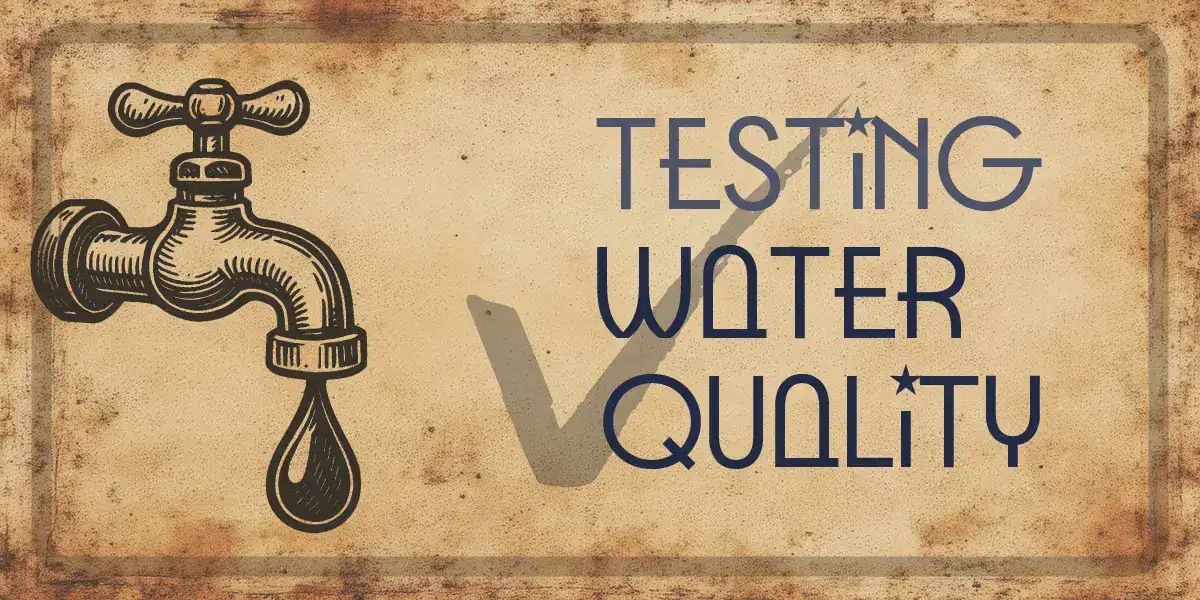Southern California’s water quality is constantly under threat from urban runoff and the downstream effects of climate change.
Contaminants flow into water systems after heavy rains, sometimes making beaches unsafe and potentially affecting your home’s water supply. Monitoring programs like Heal the Bay inform residents about these conditions, so you don’t have to guess when it’s safe to swim — or drink.
But what about the water flowing through your tap? Even if it seems clean, how can you be sure?
Common Water Contaminants
- Lead: It typically leaches from old pipes, fixtures, or solder. Exposure can result in developmental issues in children, kidney damage, and elevated blood pressure in adults.
- Chlorine: This is a disinfectant used in water treatment. Excess chlorine can leave an unpleasant taste and odor and cause skin and eye irritation.
- Nitrates: Commonly present due to agricultural runoff or septic system leakage. High nitrate levels are particularly harmful to infants, potentially causing a condition known as “blue baby syndrome.”
- Arsenic: A naturally occurring element that can seep into water supplies through bedrock. Long-term exposure can lead to serious health issues, including cancer.
- Bacteria and Viruses: Microbial contaminants like E. coli or norovirus can enter water supplies through sewage or animal waste.
- Fluoride: Often added to public water systems for dental health. However, excessive fluoride exposure can result in dental fluorosis or other health concerns.
- Pesticides and Herbicides: Runoffs from agricultural or landscaping activities can introduce harmful chemicals into groundwater, potentially disrupting endocrine function and causing other health effects.
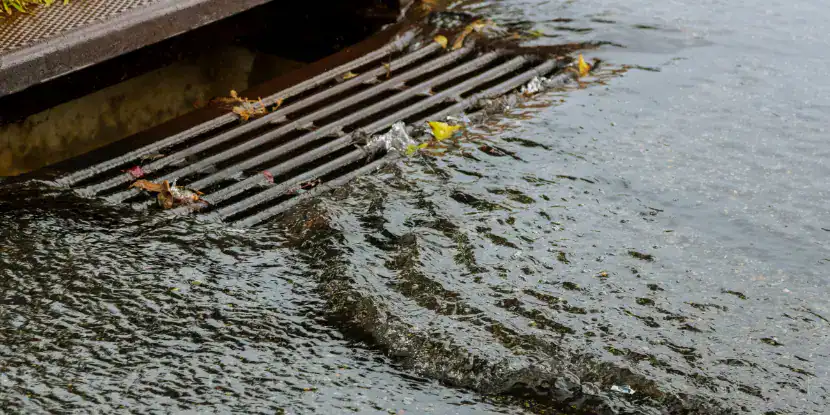
Contaminants often flow into water systems after heavy rains.
Signs of Water Contamination
1. Visual Inspection
- Cloudiness: Water should be clear. Cloudy or milky water could indicate suspended particles, like dirt or contaminants.
- Discoloration: Yellow, brown, or orange water may be a sign of rust from pipes. This usually isn’t dangerous but warrants further testing. Greenish tints may suggest algae or copper contamination.
- Floating Debris: Sediment, floating particles, or oily films are clear clues that something isn’t right.
2. The Smell & Taste Tests
A whiff or sip might reveal problems that visuals can’t:
- Chlorine Smell: Some treated water has a faint chlorine scent, but strong chemical odors could signal over-treatment or imbalance.
- Earthy or Musty Odor: This can be due to organic pollutants or algae growth.
- Metallic Taste: A metallic tang may point to high iron, manganese, or copper levels.
- Rotten-Egg Smell: Hydrogen sulfide, produced by the decay of organic matter or bacterial activity, often smells like sulfur.
If you notice any of these, it’s time for a home testing kit.

Ask your kids. They’ll tell you if the water tastes bad.
Checking Water Quality with a Home Testing Kit
A standard water test kit measures various contaminants, including:
- Bacteria like E. coli
- Lead and heavy metals
- Chlorine levels
- pH imbalance
- Nitrates and nitrites
- Water hardness
Some larger kits may measure specific allergens or chemicals, ensuring a complete picture of your water.
How to Test Water at Home
Testing with a kit is as easy as pie.
- Collect the Sample: Most kits include test strips or vials. Follow the instructions to collect tap water — some require cold and hot samples.
- Run the Test: Dip the test strip or use chemical reagents in the sample. Kits often include color-coded charts for easy comparison.
- Review the Results: Match the color changes to the chart provided. Any irregularities indicate a need for further analysis or treatment.
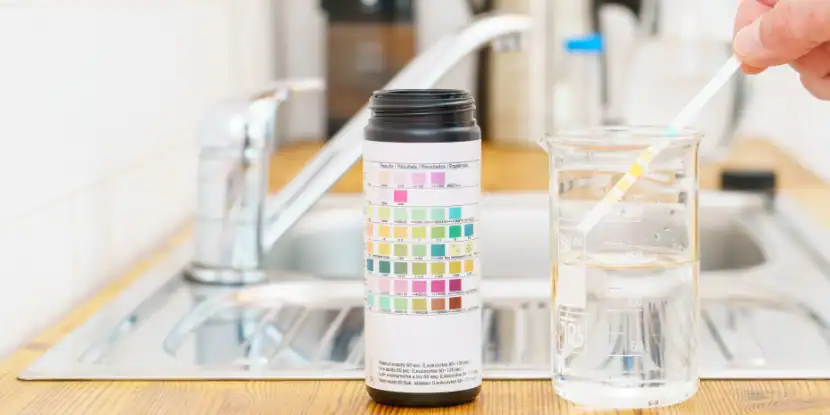
A homeowner uses a testing kit to check the tap water.
Where to Purchase a Kit
- Hardware & Home Improvement Stores: Retailers like Anawalt carry basic and advanced test kits.
- Online Platforms: Sites like Amazon offer a range of kits with reviews to guide your decision.
- Water Specialists: Some water quality companies sell specialized testing kits for regional issues.
How Often Should You Test?
- Annually: Perform a baseline test every year.
- After Heavy Rainfall: Urban runoff can affect supply, so test the water after storms.
- During Home Repairs: If you’ve had plumbing work or replaced pipes, test for rust or metals.
- If You Notice Changes: Any new smells, discoloration, or taste changes should prompt immediate testing.
What to Do About Water Contamination
Temporary Solutions
- Invest in water filtration systems, like a faucet filter or filtered pitcher, for immediate relief.
- Boil water as a short-term measure to kill bacteria, though it won’t remove chemicals.
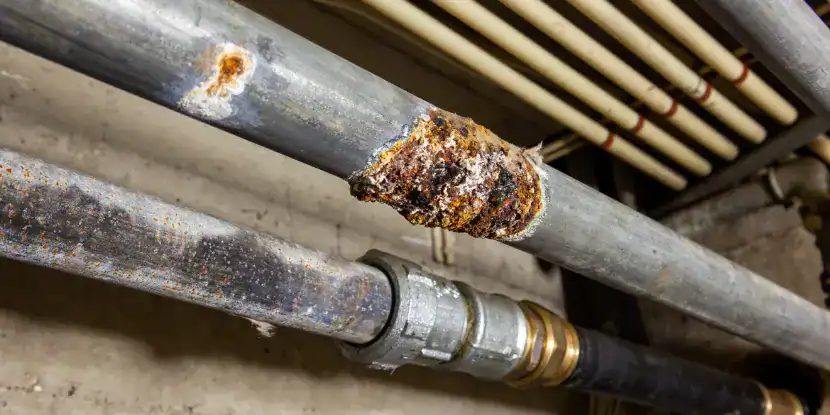
Old pipes can be a significant source of contamination.
Long-term Fixes
- Install a whole-house water filtration system for consistent clean water.
- If pipe corrosion is an issue, replace outdated plumbing.
- Consult with local authorities or public health officials for guidance on regional contaminants.
When to Seek Professional Help
DIY fixes can’t fix everything. Call in an expert if:
- Tests indicate high levels of heavy metals like lead or arsenic.
- You experience symptoms like gastrointestinal discomfort from waterborne diseases.
- Contamination persists despite filtration efforts.
A professional plumber can provide detailed insight and action plans tailored to your home and budget.
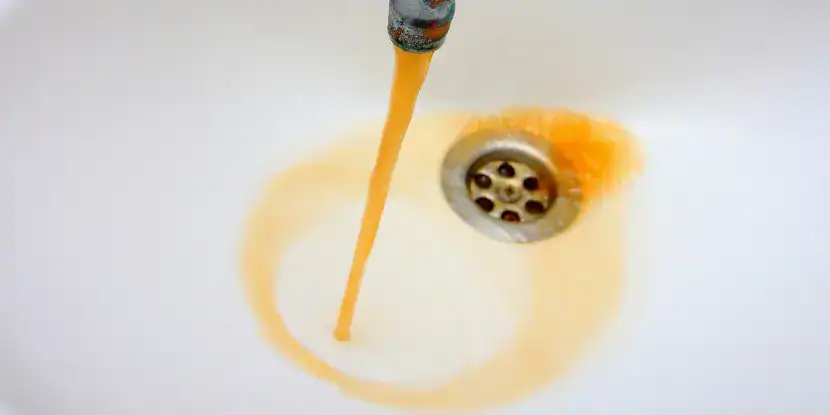
Yikes! It’s time for a water test, or maybe a new water heater.
FAQs: Testing Water Quality
Q: What’s the most common water contaminant in Southern California homes?
Urban runoff often introduces bacteria, nitrates, and other organic compounds into water supplies. Testing after heavy rains is critical.
Q: How reliable are home water testing kits?
Most kits provide accurate baseline readings. Professional testing is the way to go for highly detailed or legal requirements.
Q: Can water appearance and taste change seasonally?
Yes. During dry months, water may taste more mineralized due to reduced treatment, while wet seasons can increase biodiversity in water sources.
Q: How much does a home testing kit cost?
Basic options start at $15, with advanced kits up to $200. Choose based on your needs.
Q: Are DIY filtration systems effective?
Yes, if you choose the right type. Reverse osmosis filters are excellent for heavy metals, while activated carbon filters manage chlorine and basic contaminants.
Q: Is bottled water safer?
Not always. Bottled water may still have microplastics or less rigorous testing than your municipal source.
Q: Can my garden be affected by poor water quality?
Contaminated water can harm plants, particularly edible ones. Gardeners might want to test outdoor water sources.
Q: Should renters test their water?
Renters share the same risks as homeowners and should speak with landlords about contamination fixes if necessary.

